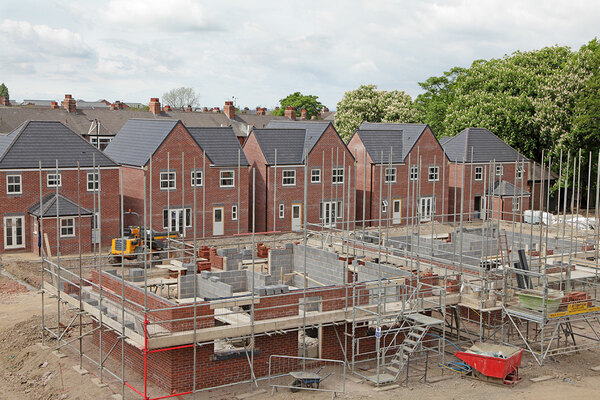You are viewing 1 of your 1 free articles
Ex-Sage director’s new firm eyes £250m worth of deals as he predicts ‘third wave’ of private money coming into sector
An ex-Sage and Home Group director has predicted a “third wave” of innovation and investment in housing association development as his new investor-backed firm sets a target of signing £250m worth of deals in its first three years.
In an interview with Inside Housing, former Sage and Home Group director Brian Ham said his new firm Swallowfield Homes would “like to get £250m of deals under way in the first three years”, adding that this would lead to 1,000 families being offered affordable housing.
Mr Ham has teamed up with developers Colin Peacock and John Parkinson to launch Swallowfield, which will develop homes to be owned by investors and leased by registered social landlords.
Mr Ham said he believes Swallowfield’s model represents a “third wave” of private money coming into the sector to increase the development of affordable housing, the first wave being when housing associations began using bond finance and the second being when housing associations began developing homes for market sale to cross-subsidise other tenures.
Under the model, social landlords will be able to enter into leases both “on balance sheet” or “off balance sheet”, Mr Ham explained.
If a social landord chooses the “on balance sheet option”, Mr Ham said they will typically sign “a 25 to 20-year management lease with a transaction at the end of that period, so effectively they’ve been paying for the houses during the period of the lease and it’s essentially a finance lease”.
“The off balance sheet solution is one where there’s a management lease in place for typically 20 to 30 years, but at the end of that 20 to 30-year period the housing association can walk away from the deal if they want to or they can renew,” Mr Ham added.
Mr Ham said Swallowfield is currently “working very constructively” with six social landlords, which are all in what he describes as the “10-40,000-home sweet spot”.
He said: “This is where they’ve got the strong balance sheets and they are ambitious and they want to innovate and try and look at new ways of supplementing their development programmes.”
He said the firm is also in talks with six institutional investors, all of which are “nationally recognised household names” and some of which are new to the sector.
Making comparisons to both bond finance and the cross-subsidy model, Mr Ham said he expects the lease-based model to start off slowly, but eventually become commonplace in the sector.
“As long as the tenant has a quality housing association experience… it doesn’t really matter that the housing association doesn’t own it,” he said.
Over the past few years, the sector has seen a growth in some housing providers looking to lease rather than own some of the houses they manage, most notably in the specialist supported housing (SSH) sector.
Mr Ham said Swallowfield makes “a very clear distinction” between housing providers who use lease-based models as a way to grow their stock and those who are wholly dependent on it.
“We will stay clear of working with those who are dependent on it because we share the view of the regulator that you shouldn’t use this exclusively as a way of building your pipeline, but if you are an established housing association with a big strong balance sheet and you are funding developments in the normal way, but you would like to do more, then we are the way in which you can do more,” he said.
Last week Inside Housing reported that traditional housing associations are increasingly looking to partner with for-profit providers and institutional investors through a variety of different models that involve housing associations no longer owning all of the homes they develop.
Update: at 3.22pm, 27.04.21 The original version of this story quoted Brian Ham as saying Swallowfield was working with social landlords in the “10-14,000-home sweet spot”. Mr Ham actually said "10-40,000 home sweet spot".
Sign up for our development and finance newsletter
Already have an account? Click here to manage your newsletters













